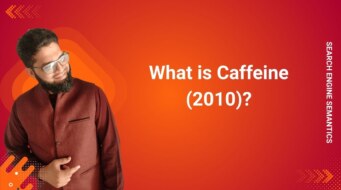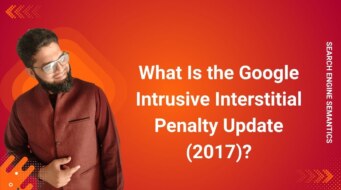What is Paid Traffic in SEO?
Paid Traffic refers to visitors who land on a website through paid advertisements rather than organic (unpaid) search results. Businesses pay for this traffic through platforms like Google Ads, Facebook Ads, and other ad networks to gain quick visibility, attract potential customers, and drive conversions.
Paid traffic is a strategic way to shortcut the slow climb of organic SEO, reaching highly targeted users instantly — especially useful for time-sensitive or competitive campaigns.
Advertising Channels That Drive Paid Traffic
Paid traffic is delivered through various advertising platforms, each with its own advantages depending on your goals and audience.
1. Search Engine Ads
These appear on platforms like Google Ads and Bing Ads and show up at the top or bottom of SERPs for targeted keywords.
Great for intent-based marketing — users are already searching for solutions.
2. Social Media Ads
Paid ads on Facebook, Instagram, LinkedIn, TikTok, or Twitter/X can be highly visual and engaging, using targeting options based on interests and behavior.
Perfect for brand exposure, retargeting, and community-building.
3. Display & Banner Ads
Visual ads displayed across partner websites via ad networks like Google Display Network.
Excellent for retargeting or creating brand recall on high-traffic sites.
4. Sponsored Content
Ads that appear as “native” content on platforms like Reddit, YouTube, Quora, or within publisher articles.
Ideal for blending in while still pushing a promotional message.
5. Retargeting Ads
These target users who have already visited your website but didn’t take a desired action (like purchasing).
High-converting strategy to recapture lost leads and bring them back.
Cost Models Used in Paid Traffic Campaigns
Paid traffic campaigns operate under different pricing structures. Choosing the right model depends on your business goals and KPIs.
1. PPC (Pay-Per-Click)
You pay only when someone clicks on your ad. Most common model.
Great for driving action and controlling spend.
2. CPM (Cost Per Mille)
You pay per 1,000 ad impressions (views), regardless of clicks.
Ideal for brand awareness campaigns.
3. CPA (Cost Per Acquisition)
You pay only when a user completes a defined action (like a sale, sign-up, or download).
Perfect for results-driven campaigns with clear conversion goals.
Advanced Targeting Options in Paid Traffic
Paid traffic platforms offer precise targeting capabilities, helping advertisers get their message to the right audience at the right time.
Demographics: Age, gender, income, education
Location: Geo-targeting by country, state, city, or zip code
Behavioral: Past browsing, purchase behavior, and brand interactions
Interests: Hobbies, preferences, and affinities
Custom Audiences: Email lists or CRM uploads
Lookalike Audiences: Targeting new people similar to your existing customers
This precision ensures your ad budget goes further by reaching the users most likely to convert.
Why Paid Traffic Matters in SEO & Digital Marketing?
1. Immediate Results
While organic SEO can take months to show results, paid traffic can deliver instant visibility and clicks from day one.
2. Highly Targeted Reach
Paid traffic lets you laser-target specific user segments — far more accurately than organic content alone.
3. Scalability
You can easily scale up successful campaigns or pause underperforming ones, providing complete control over your ad spend.
4. SEO Boost & Data Insights
While it doesn’t directly improve SEO rankings, paid traffic:
Drives more traffic to test new landing pages
Helps identify high-performing keywords for organic strategy
Reduces bounce rates when paired with optimized content
5. Supports Organic SEO
Paid traffic fills the gap while your organic SEO matures, and retargeting helps capture leads who came through unpaid channels.
Real-World Examples of Paid Traffic Campaigns
Google Ads Campaign
Keyword: “best running shoes”
Budget: $1,000/month
Goal: Drive traffic to a product comparison page
Model: PPC
Outcome: High-intent visitors ready to buy
Facebook Retargeting Campaign
Audience: Users who added products to cart but didn’t check out
Ad Type: Carousel with discount offer
Model: CPA
Goal: Recover abandoned carts
Instagram Sponsored Post
Product: Skincare line launch
Audience: Women aged 18–35 in urban areas
Goal: Brand awareness + direct sales
Ad Visuals: Before/after results and influencer shoutouts
Final Thoughts on Paid Traffic
Paid traffic is a core pillar of a successful digital marketing strategy — offering speed, precision, and flexibility. Whether you’re launching a product, testing a landing page, or amplifying an SEO campaign, paid traffic lets you connect with users in real-time and drive meaningful business results.
You can supercharge your growth, complement organic SEO efforts, and build a complete, data-driven marketing engine, by leveraging paid channels strategically.
Want to Go Deeper into SEO?
Explore more from my SEO knowledge base:
▪️ SEO & Content Marketing Hub — Learn how content builds authority and visibility
▪️ Search Engine Semantics Hub — A resource on entities, meaning, and search intent
▪️ Join My SEO Academy — Step-by-step guidance for beginners to advanced learners
Whether you’re learning, growing, or scaling, you’ll find everything you need to build real SEO skills.
Feeling stuck with your SEO strategy?
If you’re unclear on next steps, I’m offering a free one-on-one audit session to help and let’s get you moving forward.



